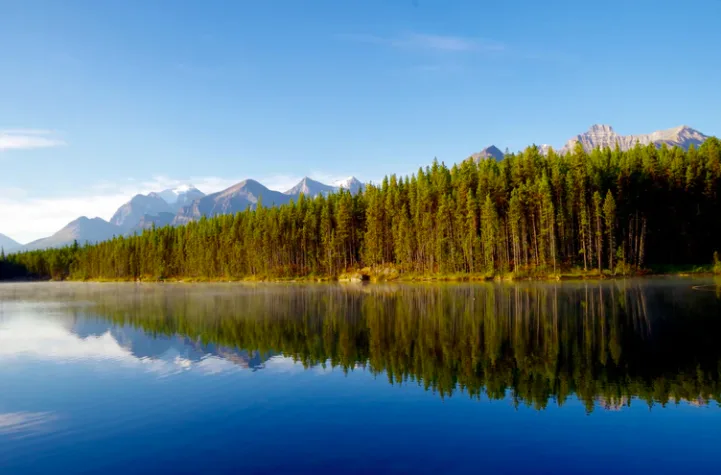
Canada launches plan to plant 2 billion trees across the country
The Canadian government says that the trees will cover roughly 1.1 million hectares, which is an area that is twice the size of Prince Edward Island.
The Canadian government has announced its plan to plant two billion trees across the country over the coming decade in hopes that it will capture significant amounts of carbon from the atmosphere. Canada aims to achieve net-zero greenhouse gas emissions by 2050 and the federal government projects that this tree planting initiative will reduce emissions by up to 12 megatonnes by 2050 and will create up to 4,300 jobs.
In early 2020 the World Economic Forum launched a plan to plant one trillion trees globally to protect biodiversity, reduce global carbon emissions, and initiate a "mass-scale nature restoration.” The idea of wide-scale tree planting has gained a significant amount of traction since then and many scientists emphasize the feasibility of this natural strategy that helps lower the amount of atmospheric carbon.
Even though the benefits of significant carbon sequestration will take years to develop, the trees start to absorb carbon as soon as they are planted through photosynthesis. “As trees become established and grow, their rate of carbon sequestration will accelerate until they hit full maturity, at which time the rate slows. However, even young trees that are only two meters tall can have positive impacts such as reducing soil erosion control, water-table regulation and flood control, wildland fire risk reduction, and support for species at risk,” the Department of Natural Resources explained to The Weather Network.

Norvan Falls Trail in North Vancouver, British Columbia. Credit: Spencer Watson via Unsplash
A study published in Science used satellite data to identify all the areas on Earth that would be suitable for forest growth and found that there are 4.4 billion hectares of land where tree planting could result in continuous tree cover. The scientists say that several million trees could be planted in these areas that could store up to an additional 205 gigatonnes of carbon, an amount equivalent to 66 per cent of the 300 gigatonnes of carbon that have been released by humans since the early 1900s. After Russia and the U.S., Canada showed the greatest potential to restore the largest amount of forest area.
“There is no path to net-zero emissions that does not involve our forests. Planting trees is a natural climate solution that reduces emissions while providing other benefits such as improved air and water quality, particularly in urban settings” and a “decreased risk of wildland fire to rural communities and support for biodiversity,” states the Canadian government’s press release. The Canadian government estimates that 1.1 million hectares will be covered by the planted trees, which is an area twice the size of Prince Edward Island.

Banff, Alberta. Credit: Emma Van Sant via Unsplash
Several partnerships will be developed to carry out the initiative and these groups include agriculture stakeholders, various levels of government, philanthropic organizations, and Indigenous organizations and communities.
“Investing in nature-based climate solutions offers new opportunities to strengthen relationships with Indigenous peoples. Restoring lands and rebuilding forests provides an opportunity for partnership with communities and organizations rooted in recognition of Indigenous rights, respect, and cooperation. Support for Indigenous-led tree planting initiatives will build on partners’ strengths and help address capacity where needed, while also contributing to urgently needed economic green recovery and job creation,” said the Department of Natural Resources.
This initiative will begin in spring 2021 and some of the first steps include ordering the seeds of the desired tree species and expanding nursery capacity to grow seedlings until they can be planted in the ground. Both rural and urban regions will be included in this initiative after assessed for adequate access and soil conditions. Monitoring programs through various partnerships, including Environment and Climate Change Canada and Agriculture and Agri-Food Canada, will also be implemented to track tree survival rates and record the amount of carbon they sequester.
Thumbnail credit: Andrew Coelho via Unsplash












